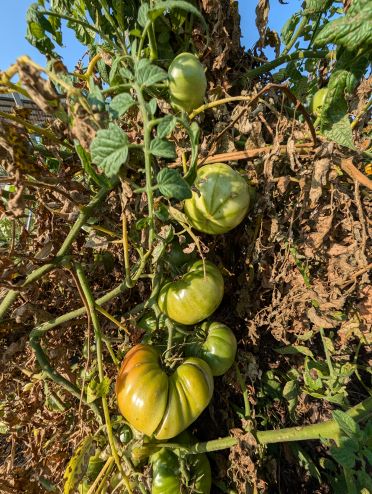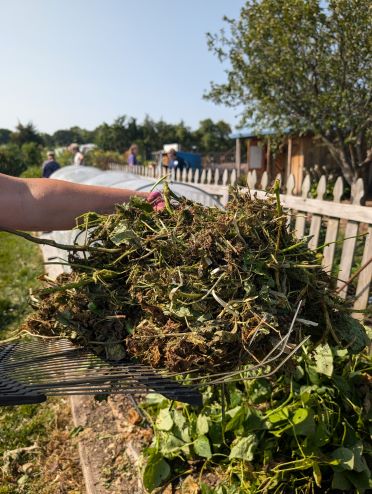 Removing Plant Debris
Removing Plant Debris
As cooler days set in, many vegetable gardeners may be working on extending their cool-season harvest, cleaning out beds, or amending their soil. Although production is slowing, these gardeners know that several tasks remain that can optimize future garden growth, and they are also likely aware that cleaning out garden beds plays an even more pivotal role in preparing for the next growing season than one may think. Apart from a more workable garden, several varying critters can find homes within plant debris that ultimately inhibit garden performance, from damaging insects to fungal diseases to even wildlife. Because of this, knowing how to address this plant debris correctly is pivotal.
In a perfect world, the spent plant debris would always be repurposed in compost or reworked into the soil. This proactive approach not only keeps nutrients cycling within the food and soil cycles but also keeps unneeded waste out of rapidly filling landfills and decreases the need for costly inputs that can often be less environmentally friendly. However, the caveat is that the debris must be in good enough, clean enough condition to be utilized in such an operation safely.
into the soil. This proactive approach not only keeps nutrients cycling within the food and soil cycles but also keeps unneeded waste out of rapidly filling landfills and decreases the need for costly inputs that can often be less environmentally friendly. However, the caveat is that the debris must be in good enough, clean enough condition to be utilized in such an operation safely.
Remember what issues your garden has faced this season as you begin removing debris and allocating its final disposal method. If a severe insect infestation or fungal plague has infested your garden this year, it is likely better to fully dispose of those plants than to work them back into the soil or to utilize them as brown matter for compost. While the purpose of composting should address some of these issues (the cooking and breaking down of organic matter will partially sterilize much of the added components), it is never going to decompose efficiently enough to sterilize all pest eggs, fungal spores, and disease pressure introduced to it through infected plants. As such, it is best practice to completely omit plant matter infected with these from compost so as not to run the risk of contaminating the compost and then later spreading the pests with it.
If able to, fully accounting for local laws, regulations, and safety and health concerns, many gardeners will take to burning this infected plant matter as an efficient method of sterilizing the pest pressure and disposing of the plant matter –without needing to introduce it to a landfill. This should be done tactfully, remembering that overwintering bees may also be present in the spent canes, stalks, and leaves of the garden debris. As such, the effort should be made early in the fall season, long before the bees begin settling into their winter hiding places. Then, remember as well, ash raises soil pH, so it is best to keep it away from gardens prone to leaning alkaline. If you have questions about your soil pH, consider adding a soil test to your fall checklist. Our Johnson County Master Gardeners Hotline can answer questions you may have about that process at 913-715-7050.
Lastly, if your garden is prone to wildlife issues with mice, voles, rabbits, etc., remember that unremoved garden debris is likely drawing them in as a place of shelter. Debris removed incentivizes them to go elsewhere to overwinter, leaving fewer issues to be addressed when the growing season returns. This simple step taken now will improve your garden's chances of a healthy and productive growing season to come.
By Anthony Reardon, Horticulture Small Farms Agent, 2024
Have questions?
The Garden Hotline is staffed by trained EMG volunteers and Extension staff who will assist you with questions. Phone: (913) 715-7050 Email: garden.help@jocogov.org